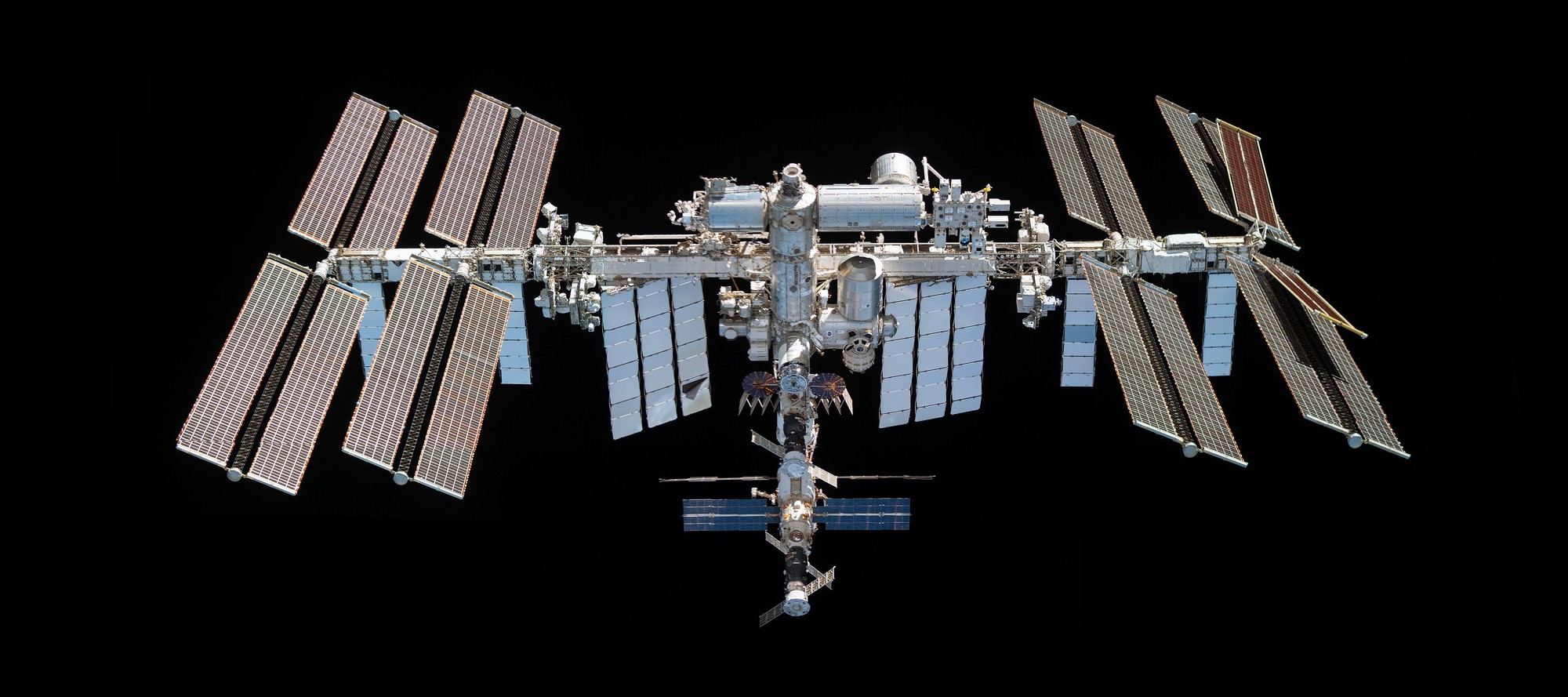According to Russia’s news agency Tass, leaders at Roscosmos have decided to withdraw from the International Space Station (ISS) after 2024. The report said that by that time, “all obligations to partners will be fulfilled.” Additionally, Russia said they want to build their own space station.
Tass said the decision was announced today (July 26, 2022) during a meeting between Russian President Vladimir Putin and the newly appointed Director General of Roscosmos Yuri Borisov. Borisov recently replaced the long-time but controversial Dmitri Rogozin, who after Russia’s invasion of Ukraine, bristled at US and European opposition to the attack and threatened to drop the ISS on the countries who supported Ukraine.
But the announcement of the departure was news to NASA. Senior officials from the space agency were asked about the Tass new report at the International Space Station Research and Development Conference (ISSRDC) taking place in Washington, DC, on Tuesday morning, and NASA ISS Program Director Robyn Gatens said they’ve received no official notice that Russia will end its ISS. Gatens added that NASA still plans to keep the ISS operational until 2030.
US astronaut Kjell Lindgren spoke at the conference from the ISS and said they had only just heard the news reports.

“That is very recent news and so we haven’t heard anything officially,” Lindgren said during the live downlink from the ISS. “Of course, you know, we were trained to do a mission up here, and that mission is one that requires the whole crew.”
He later added, “As a group we continue to work towards success, and that is everybody working together to make sure we’re accomplishing the science and keeping the crew and the vehicle safe.”
But is this announcement just a strategic move or a ploy to confound NASA, ESA and the Canadian Space Agency? Former Canadian astronaut Chris Hadfield seems to think so, tweeting, “Remember that Russia’s best game is chess.”
And Russia’s announcement is vague, with no details or specific date, just “after 2024,” or what obligations will be fulfilled. The intergovernmental agreement that governs the ISS partnership states that most partners must give other ISS partners at least one year’s written notice about the intent to leave. Additionally, all the international partners would have to agree on how the ISS would be physically operated, as the Russian Zvesda Service Module is the main source of propulsion and navigation.
Anatoly Zak, longtime reporter on Russian space activity said he is taking this announcement with a grain of salt, and on Twitter, said this is probably just another aspirational statement, rather than anything grounded in reality.
In April 2021, Borisov, who at that time was Deputy Prime Minister, stated that the state of the ISS left much to be desired, and said that Russia would likely focus on creating its own orbital station, called The Russian Orbital Service Station (ROSS). Tass said the Energia Rocket and Space Corporation was tasked with ensuring the readiness of the first module for the new domestic orbital station by 2025, which will focus around a scientific and energy module, which was previously supposed to be launched to the ISS.
Also in April, then head of Roscosmos, Rogozin, stated that due to financial constraints it was difficult to simultaneously implement the ISS project and build a new station, and they would have an “overlap period,” when the ISS and ROSS would be operated in parallel for an unspecified time.
At the ISSRDC, ISS program Manager Joel Montalbano says that even the other international partners are considering what comes next after the ISS’s currently planned retirement in 2030, and what the transition should look like, but that the space station is currently in good shape.
“Yes, the ISS is up to the task of going another 8 years,” Montalbano said, “It is ready to go to 2030 and could go a little longer, too.” He added that with all the current activity on the ISS – with regular flights by SpaceX’s Dragon, upcoming Starliner and Sierra Nevada’s Dream Chaser cargo missions, as well as upgraded Japaese HTV cargo spacecraft — “there’s no grass growing on the ISS,” Montalbano said.

Gatens said that there should not be a gap in having a human presense in low Earth orbit. “We need to plan for a smooth transition, Gatens said. “It’s all about continuity and keeping our international partners with us. Hopefully commercial space stations will be ready by the end of the decade. We have commercial partners we’re working with plans to be operational as soon as 2027. As soon as they’re ready we’ll purchase services.”
Mike Gold, NASA’s Former Associate Administrator for Space Policy and Partnerships said at the conference that on the ISS there are no big challenges the space station, just opportunities.
“We need to grow beyond Cold War paradigm,” he said, “and the international partners need to remain focused on continuous presence in LEO.” Gold also added that the ISS deserves a Nobel Peace Prize for how it has kept the US and Russia on speaking terms, despite several political challenges over the lifetime of the space station.

